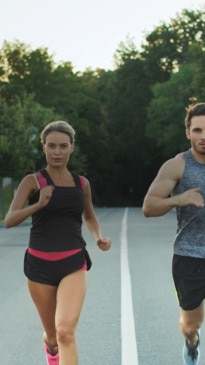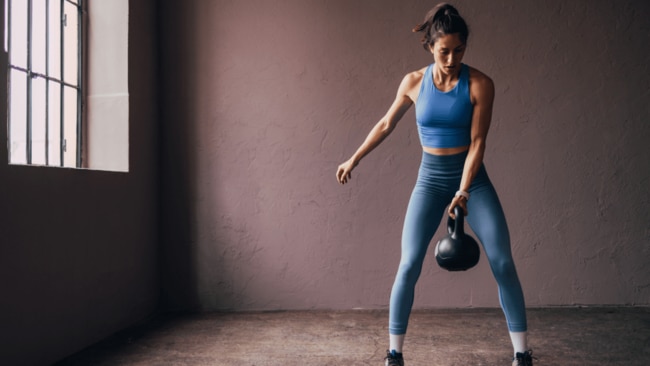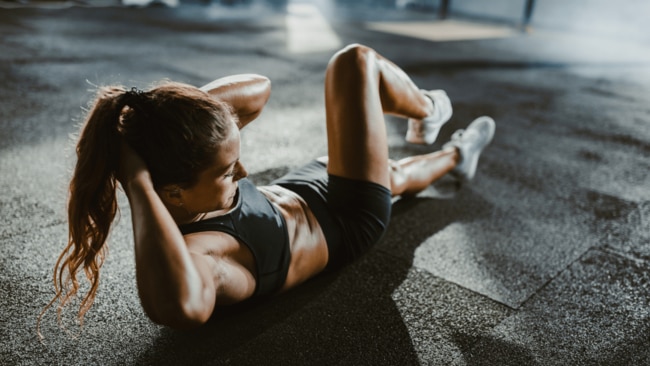Why functional fitness is on the rise
It's about more than trendy gyms

Lifestyle
Don't miss out on the headlines from Lifestyle. Followed categories will be added to My News.
We're seeing more people switch out their structured gym workouts for functional fitness exercises. Kic's strength trainer and body confidence coach Sami Rose breaks down the rise and rise of the trend.
Whether you’re aware of the trend or not, you’ve likely been seeing the rise in the popularity of functional fitness.
The term has rapidly started appearing in gym class descriptions, and our feeds are filling up with videos of people in group sessions at trendy gyms with very few machines in sight.
Body+Soul’s Health of the Nation report has highlighted the rise in functional fitness, with more Australians favouring exercises reflecting our day-to-day activity, as opposed to structured workouts focused on targeting specific muscle groups.

What is functional fitness?
Moving away from intimidating big gym machines, functional fitness mainly involves using our bodyweight or free weights to improve how we move daily.
F45 Senior Coach Emily Outterside told Women’s Health “isolation exercises, compared to functional training exercises, focus on a specific muscle group, with little input from other muscles. For example, a bicep curl only uses the biceps to lift the weight and just the elbow joint for movement. Though this is good way to gain muscle mass, it doesn’t translate into benefiting us on a holistic all round level”.
Whereas a compound exercise such as a squat “uses a variety of muscles and joints in the knees, hips and legs, as well as having the benefit of strengthening your tendons, bones and ligaments around the leg muscle”.
Kic’s strength trainer and body confidence coach, Sami Rose supports the trend, saying “Functional fitness is all about helping with real-life movements, like lifting and bending, so not only do you feel good in your body throughout everyday life, but it also supports the strength, mobility and stamina to do the fun things we love, like going on hikes, playing with our kids, and even something as simple as carrying a suitcase with more ease when travelling”.
The benefits sound promising, but why is functional fitness having a moment?

Behind the popularity of functional fitness
Our Health of the Nation report indicates that more than half of Australians (54 per cent) are mainly focusing on improving their overall health and wellbeing during workouts rather than prioritising seeing big physical changes.
38 per cent are also looking to boost their energy levels, 37 per cent want to increase longevity and healthy ageing, and 36 per cent aim to increase flexibility and mobility.
So in shifting our workout focus from losing or gaining weight, or getting us closer to our ideal physique, it makes sense that functional fitness would be the go-to for many of us.
By deprioritising enhancing your physical appearance, you can improve your daily function and boost your fitness level with less likelihood of injury.
Rose says “We love seeing things shift away from exercise that focuses solely on appearance and instead prioritising workouts that help us feel strong, capable, and confident in our everyday lives.”

How to incorporate functional fitness into your routine
Outterside said “a typical functional training workout will vary depending on the goal, but typically it's a mixture of exercise that will improve your cardiovascular system as well as your strength”.
Her recommended functional fitness exercises to improve overall fitness include:
- Walking lunges
- Push ups
- Squats with overhead reach
- Planks
- Deadlifts
Keen to change up your workouts? You can access hundreds of on-demand guided 5-30 minute low impact, HIIT, strength, bootcamp and Pilates classes from Kic for one month for free.
More Coverage
Originally published as Why functional fitness is on the rise





